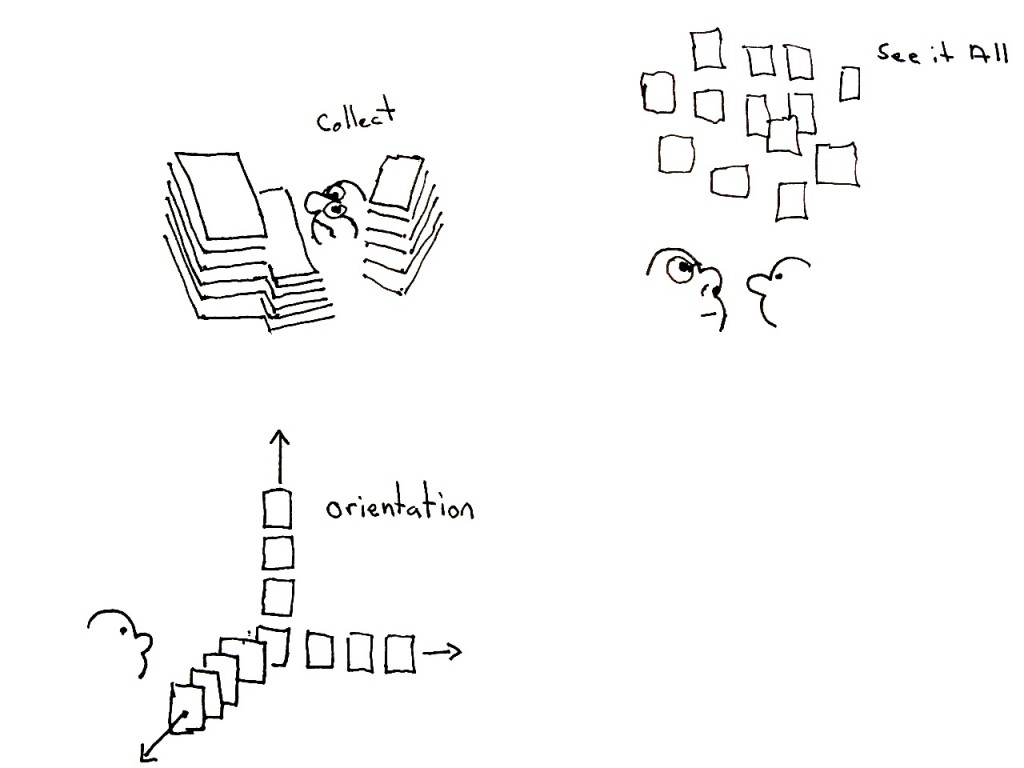 When doing a strategic plan, you may be faced with mountains of data. How you use the data from many different surveys is critical to the outcome of your strategic plan. You will have to sort what is relevant from what is irrelevant. Many of you may already have your eyes glazing over just from the mention of such a topic, but stay with me. I’m going to tell you how to eliminate some of that data–the least relevant and most misleading–and use the rest.
When doing a strategic plan, you may be faced with mountains of data. How you use the data from many different surveys is critical to the outcome of your strategic plan. You will have to sort what is relevant from what is irrelevant. Many of you may already have your eyes glazing over just from the mention of such a topic, but stay with me. I’m going to tell you how to eliminate some of that data–the least relevant and most misleading–and use the rest.
Obtaining Data
If you don’t want mountains of data (the useful and useless all piled on top of each other), here are three instructions you should provide to all strategic-planning participants:
1. Tell them how the data is going to be used, so they know what they say matters.
2. Instruct them to use “N/A” when they don’t know the answer. If they feel like they do know the answer, but aren’t 100% sure, they should still answer the question–that’s because these feelings are often guiding their decision-making. If they’re completely guessing, however, they should put N/A and move on. To do otherwise is to both waste their time and corrupt the data pool. It’s human nature to want to know and share knowledge, so it’s important for leadership to affirm that it’s okay NOT to know and to put down N/A in these instances.
3. Tell them to respond in FULL when they do know the answer (and especially if they feel they know the answer as well as or better than anyone else). Responders should feel compelled to reveal the full depth of their knowledge, so that key insights aren’t excluded from strategic planning. The most knowledgeable people should not provide INFORMATION LITE. When faced with hours-long surveys, participants may be inclined not to respond in full. Impress upon them that it is important to provide the full extent of what they know when they know it.
Sorting Data
Imagine that you were analyzing a survey of 42 questions in 7 categories that all of your employees took (based on the Malcolm Baldrige quality award). The following is a list of those categories:
- Leadership
- Strategic Planning
- Customer and Market Focus
- Information and Analysis
- Human Resource Management
- Process Management
- Business Results
With a total of 294 responses, you might find the task overwhelming. It’s a little manageable, though, when you review and discuss one category at a time. It’s a little more manageable yet if you seek to tell a synthesized story, not assign rankings or weights (positive to negative). Simply let all the responses soak in, like a mashup. The Grey Album by Danger Mouse mixes an a cappella version of Jay-Z’s Black Album with instrumentals from The Beatles White Album. What is the data telling you when you mash it up?
SWOT
Once you’ve synthesized the data into a mashup, do a SWOT analysis. How does your mash-up point toward strengths, weaknesses, opportunities, or threats? Does autonomy of decision-making, for example, support your mission and lead to more opportunities? Does having low employee turnover help solidify your vision (strength) or might it leave you vulnerable to external threats? Storing data in SWOT categories/buckets is extremely helpful when it comes to identifying objectives, strategies, and actions later. You will have transformed your mountains of data into meaningful and useful forms.


